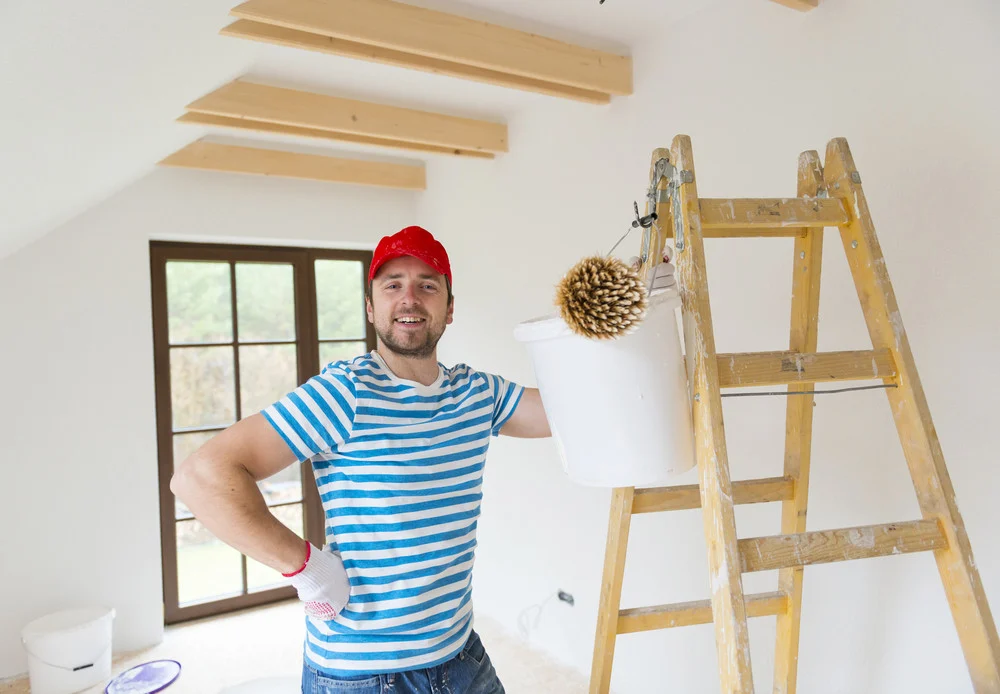Hiring house painters can significantly enhance the look of your home, but the success of the project depends on effective collaboration and careful planning. To ensure you achieve the best results, it’s crucial to avoid common mistakes that can lead to dissatisfaction or additional costs. Here’s a guide to help you navigate the painting process smoothly and make the most of working with house painters.
1. Failing to Research and Vet Painters
One of the most significant mistakes homeowners make is not thoroughly researching potential painters. Before hiring a painter, ensure you:
- Check References and Reviews: Look for reviews and testimonials from previous clients. Ask for references and contact them to inquire about their experience with the painter.
- Verify Credentials: Ensure the painter is licensed, insured, and has a good standing with local trade associations. This helps ensure you’re working with a professional who adheres to industry standards.
2. Not Defining Project Scope Clearly
A common mistake is not clearly defining the project scope and expectations with your painter. To avoid misunderstandings:
- Detail Your Requirements: Provide a detailed description of what you want, including areas to be painted, color choices, and any specific finishes or techniques.
- Get a Written Contract: Ensure that all aspects of the project are documented in a written contract, including the scope of work, materials, timeline, and cost. This protects both you and the painter and ensures clarity.
3. Choosing Paint Colors Without Proper Testing
Selecting paint colors can be challenging, and mistakes here can lead to dissatisfaction with the final result. To make an informed decision:
- Test Samples: Always test paint samples on your walls before committing. Paint large swatches in different areas of the room and observe them at various times of day to see how they look under different lighting conditions.
- Consider Undertones: Be aware of the undertones in the paint colors you choose. Undertones can affect how the color appears and interact with other elements in the room.
4. Overlooking Surface Preparation
Proper surface preparation is crucial for a successful paint job. Skipping this step can lead to poor results. To ensure the best finish:
- Clean and Repair Surfaces: Ensure that walls and surfaces are clean, dry, and free of dust, grease, and mildew. Repair any cracks, holes, or imperfections before painting.
- Prime When Necessary: Use a primer if needed, especially when painting over dark colors or new drywall. Primer helps with paint adhesion and ensures an even finish.
5. Ignoring Proper Ventilation
Adequate ventilation is essential during and after the painting process. Without proper ventilation:
- Paint Fumes: Paint fumes can be harmful if inhaled in large quantities. Ensure that windows and doors are open, and use fans to promote airflow.
- Drying Time: Good ventilation helps the paint dry faster and more evenly, reducing the risk of issues such as streaks or uneven gloss.
6. Not Communicating with the Painter
Effective communication with your painter is key to a successful project. To avoid misunderstandings:
- Discuss Expectations: Clearly communicate your expectations, including the level of detail required and any specific preferences or concerns.
- Be Available for Questions: Stay accessible throughout the project to answer questions or provide feedback. Address any concerns or issues as they arise to ensure they are resolved promptly.
7. Overlooking the Details of the Job
Attention to detail can make a significant difference in the final result. Common oversights include:
- Trim and Edges: Ensure that the painter pays attention to details such as trim, edges, and corners. These areas require precision for a clean, professional look.
- Clean-Up: Confirm that the painter will handle clean-up properly, including removing painter’s tape, cleaning tools, and disposing of waste materials.
8. Focusing Solely on Cost
While cost is an important factor, choosing a painter based solely on the lowest price can lead to subpar results. To balance cost and quality:
- Evaluate Value: Consider the value offered by the painter, including their experience, reputation, and the quality of materials used. Sometimes paying a bit more ensures better results and fewer issues in the long run.
- Avoid Hidden Costs: Clarify the total cost of the project upfront, including any potential additional expenses. Ensure that the painter provides a detailed estimate and explains what is included.
9. Neglecting Post-Painting Care
Proper care after the painting is complete is crucial for maintaining the appearance and longevity of the paint job. To protect your investment:
- Avoid Heavy Traffic: Refrain from placing furniture or heavy items against freshly painted walls until the paint is fully cured.
- Regular Maintenance: Clean walls gently and avoid using harsh chemicals that could damage the paint. Address any issues, such as touch-ups, promptly to maintain the quality of the finish.
10. Not Checking the Final Work
Before finalising the project and making the final payment:
- Inspect Thoroughly: Conduct a thorough inspection of the painted areas to ensure that the work meets your expectations. Check for any missed spots, uneven coverage, or other issues.
- Request Touch-Ups: If any issues are identified, request touch-ups or corrections before completing the payment.
Conclusion
Avoiding these common mistakes when working with house painters can lead to a more successful and satisfying painting project. By thoroughly researching painters, clearly defining your project scope, testing paint colors, and focusing on surface preparation and communication, you can achieve a high-quality finish that enhances your home’s appearance. Paying attention to detail, balancing cost and value, and ensuring proper post-painting care will help you enjoy the benefits of a well-executed paint job for years to come.

 How to Choose the Right Window Replacement Contractor
How to Choose the Right Window Replacement Contractor  The Best Aircon servicing Singapore Maintaining Coolness by Performing Top-Quality Maintenance
The Best Aircon servicing Singapore Maintaining Coolness by Performing Top-Quality Maintenance  Why Columbus Homeowners Are Falling in Love with Epoxy Garage Floor Coatings
Why Columbus Homeowners Are Falling in Love with Epoxy Garage Floor Coatings  Flood Cleaning Services in Fort Worth, TX: Essential Steps to Restore Your Home
Flood Cleaning Services in Fort Worth, TX: Essential Steps to Restore Your Home  The Benefits of Caesarstone Quartz: Style, Strength, and Sustainability
The Benefits of Caesarstone Quartz: Style, Strength, and Sustainability  Are Home Elevators Worth the Investment? A Canadian Homeowner’s Guide
Are Home Elevators Worth the Investment? A Canadian Homeowner’s Guide  5 Common Gutter Problems That Gutter Guards Can Solve
5 Common Gutter Problems That Gutter Guards Can Solve  How a Whole-House Humidifier Can Help With Your Health
How a Whole-House Humidifier Can Help With Your Health  Master Bathroom Remodeling: Essential Tips for a Stylish Upgrade
Master Bathroom Remodeling: Essential Tips for a Stylish Upgrade 